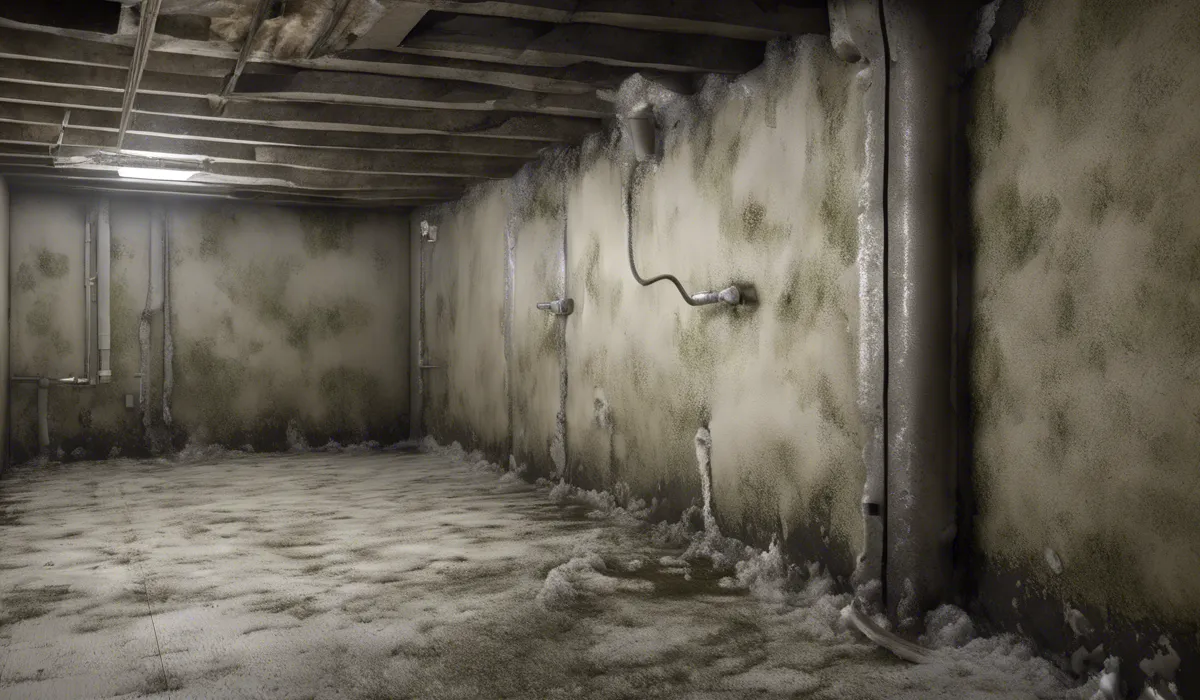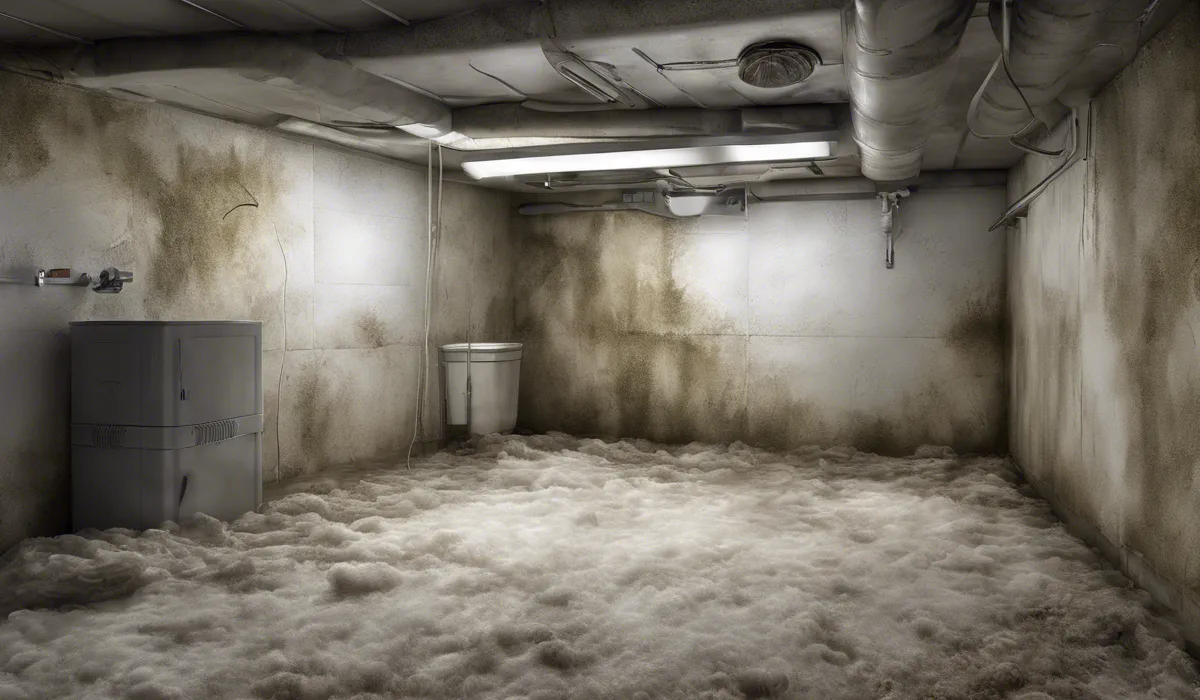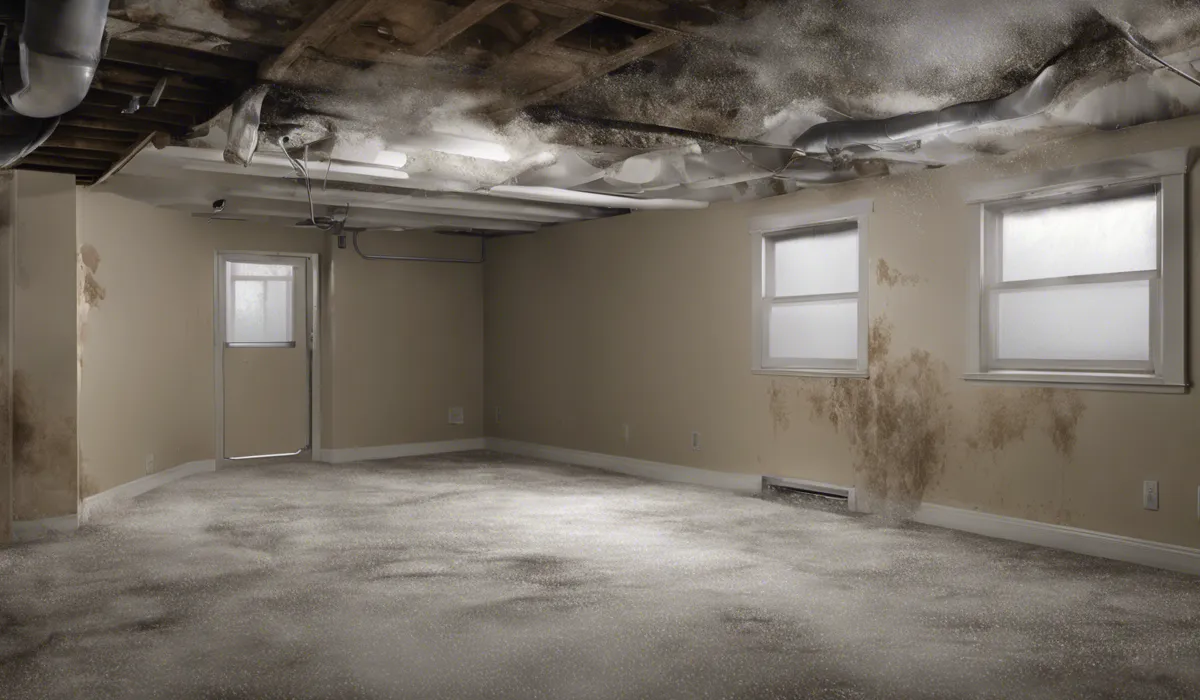To avoid mold in the basement, maintain low humidity levels below 60% with a dehumidifier, ensure proper ventilation, fix water leaks promptly, and use mold-resistant products and paints. Regularly clean and inspect the area for early signs of mold.
Understanding Mold and Its Causes in Basements

Defining Mold and Common Basement Varieties
Mold is a living organism, a type of fungus that can grow indoors and outdoors. In basements, we often find black mold, which is not just unsightly but can also pose health risks.
There are other types too, like white or green mold, each thriving in damp, dark conditions.
Conditions That Foster Mold Growth
Mold loves moisture, warmth, organic materials such as wood or paper, and dark spaces. Basements often provide all of these, making them a hotspot for mold proliferation.
Tracing Sources of Basement Moisture
Moisture can seep into basements from outside sources like heavy rain or a high water table.
Inside, leaking pipes, condensation from appliances, or even the use of a humidifier can add unwanted moisture.
Signs That Mold Has Invaded Your Basement
Look out for a musty smell, visible growth on walls or objects, or health symptoms like allergies. These could all be signs that mold has made your basement its home.
Prevention Strategies for Basement Mold

Keeping Humidity Levels in Check
Maintaining a basement’s humidity below 60% is crucial. A dehumidifier can help with this, as can ensuring that your basement is well-ventilated.
Open windows when the weather allows, and consider installing vents or fans.
Seal Against Moisture Intrusion
Make sure windows and doors are sealed properly to prevent moisture from sneaking in. Weather stripping and caulking can do wonders here.
Waterproofing to Protect Your Basement
Applying waterproof coatings and ensuring good drainage around your home can prevent water from causing problems.
Choose building materials and paints that resist water to add an extra layer of protection.
Regular Maintenance is Key
Inspect and fix any leaks promptly. Clean your gutters to avoid water spillage near your foundation.
And keep an eye on your basement’s humidity with a simple tool called a hygrometer.
Remediation and Long-Term Mold Management in Basements

Immediate Action Against Mold
When you find mold, clean small areas with soap and water. But for larger issues, you may need professional help. Don’t wait, as mold can spread quickly.
Choosing Between Professional or DIY Mold Remediation
For small patches of mold, a do-it-yourself approach can work. But if the mold is extensive, or if you’re not sure about the type, it’s best to call in the experts.
Strategies for Ongoing Mold Management
Keep your basement clean and free of clutter. Improve insulation to prevent condensation.
Regularly check and maintain your HVAC systems and dehumidifiers to ensure they are working effectively.
Addressing the Root Cause
It’s important not just to clean up mold but to fix the underlying issues that allowed it to grow in the first place. This will help prevent future mold problems.
FAQs About Avoiding Mold in Basements
How can I maintain an ideal humidity level to prevent mold in the basement?
To maintain an ideal humidity level and prevent mold, use a dehumidifier to keep the humidity below 60%, and regularly monitor the humidity with a hygrometer.
What type of ventilation is necessary to avoid mold in the basement?
Proper ventilation can be achieved by installing vents or exhaust fans and keeping air ducts clean to promote air circulation and reduce moisture.
How quickly should I fix water leaks to prevent basement mold?
Fix water leaks promptly, as soon as you notice them, to prevent moisture accumulation which can lead to mold growth.
What types of mold-resistant products should I use in my basement?
Use mold-resistant products such as paints, drywall, and insulation designed specifically to resist mold growth in your basement.
How often should I clean and inspect my basement for mold?
Clean and inspect your basement regularly, at least every few months, for early signs of mold, especially in damp and dark areas.
Final Thoughts
Maintaining a mold-free basement requires keeping humidity under 60% with a dehumidifier, ensuring adequate airflow, promptly repairing leaks, and opting for mold-resistant materials and paints.
Regular cleaning and vigilant inspections for mold signs are crucial for early detection and prevention.
